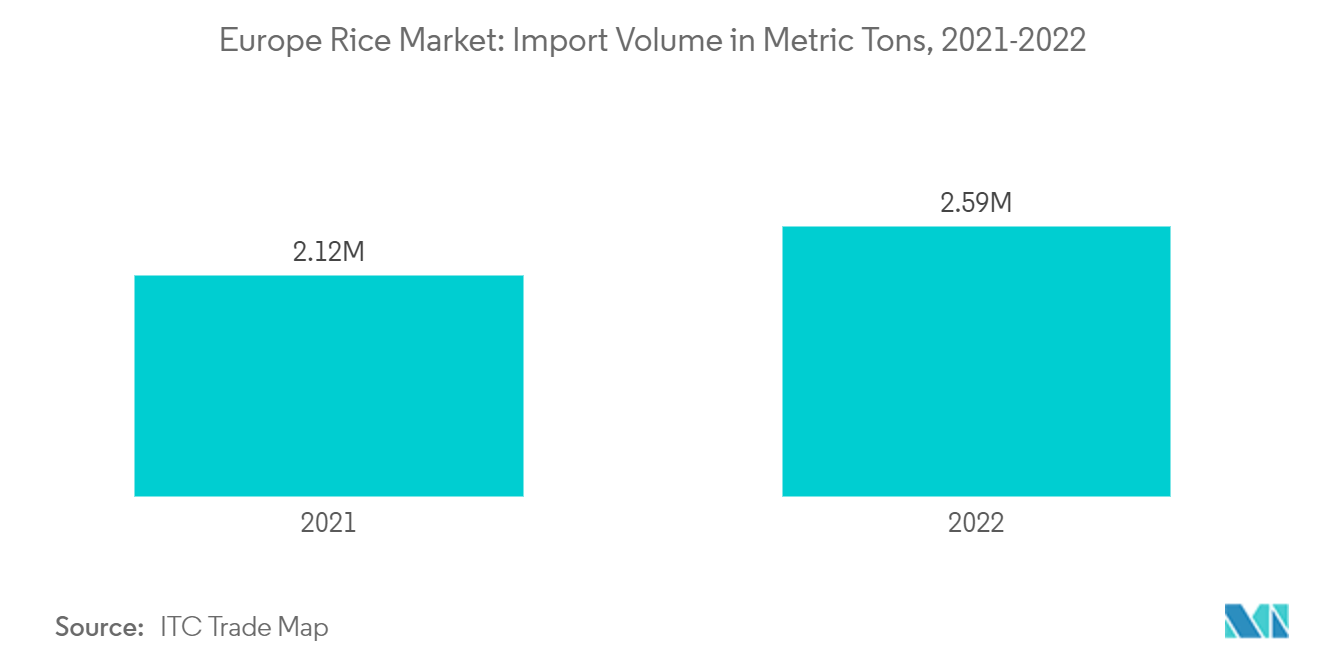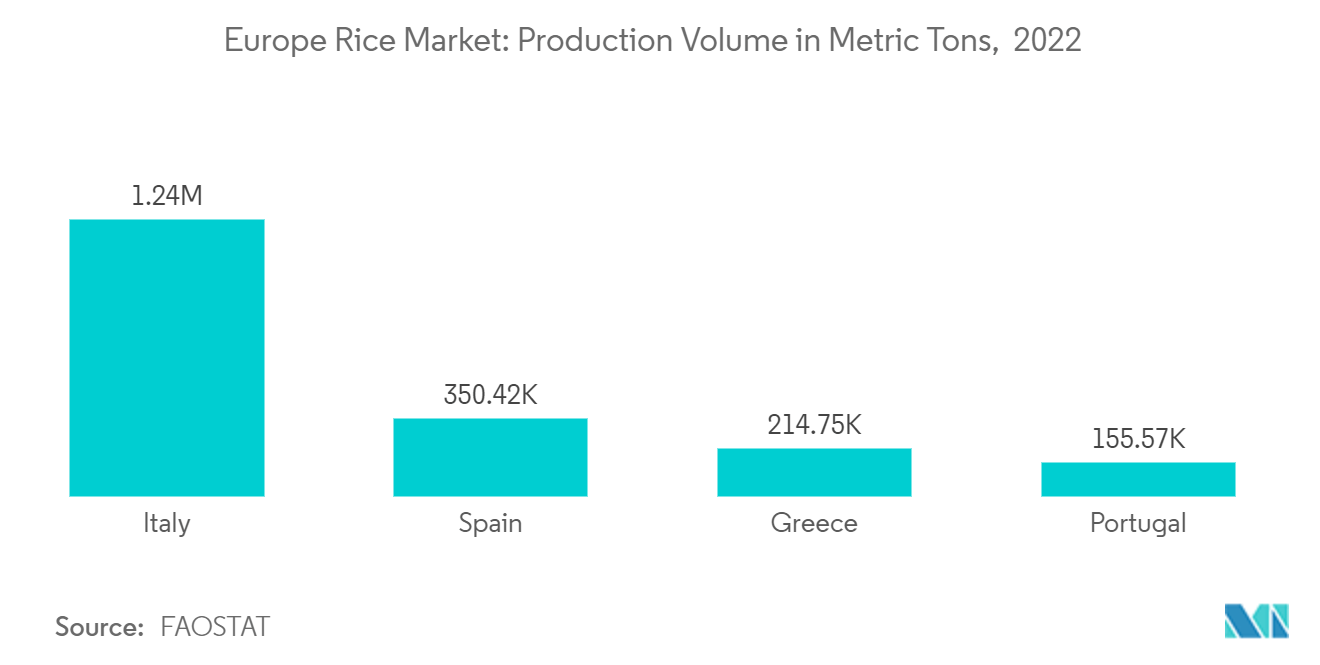Market Trends of Europe Rice Industry
Rising Imports of Rice are Propelling the Market
The increasing imports of rice in Europe are due to shifting consumer preferences, growing ethnic populations, and limited local production. Duty-free imports of milled rice, particularly basmati rice, from countries like Cambodia, Myanmar, India, and Pakistan are on the rise. Additionally, the influx of migrant populations in the region is driving the demand for rice. According to Eurostat, as of January 2023, 27.3 million migrants lived in the region, constituting 6.1% of the total population. The region's production has also declined due to widespread drought, reduced winter snowfall, and heat stress. According to the FAOSTAT, in 2022, rice production in Europe was 3.05 million metric ton, marking a 24% decrease from the previous year.
Disruptions or bottlenecks in the worldwide supply chain significantly impact the market, given the region's critical reliance on rice imports. For instance, in 2023, the Indian government imposed a ban on the export of non-basmati white rice due to domestic food security concerns, which impacted the European Union as it depends on Indian rice imports. However, there is increasing demand for sustainably sourced rice. Imports cater to this market by providing a variety of specialty rice products that align with environmental concerns and ethical consumer choices.

Italy is the Largest Rice Producer and Significant Consumer
Italy emerged as the dominant force in European rice production in 2022, contributing approximately 40% to the region's total output. Up to 50% of Italy's paddy fields are dedicated to cultivating the Lungo A and Medio varieties. The Lungo A, commonly used in risotto variations favored for national consumption, is frequently parboiled. This is also true for the esteemed Carnaroli, Arborio, Baldo, and Roma variants, which command premium market prices despite being produced in limited quantities. "Common" or Tondo rice occupies 30% of Italy's rice fields, while the Lungo B variety, encompassing the globally sought Indica, makes up the remaining 20%. While Tondo and Lungo rice yield more, they are priced lower in the market compared to the premium Lungo A and Medio varieties. In 2022, Italy's rice production plummeted by 24% due to a severe drought, subsequently pushing domestic market prices higher.
Risotto stands out as a quintessential Italian dish, witnessing surging demand both domestically and internationally. Italian consumers increasingly view rice and grains as healthier alternatives to pasta. This shift is evident as health-conscious Italians are reducing their pasta intake in favor of these grains. For context, Italy's rice consumption reached 984.5 thousand metric ton in 2022, according to the FAOSTAT and the ITC Trade Map data.
In response to evolving consumer preferences and lifestyles, Spanish companies are actively innovating to meet contemporary demands. In 2023, a Spanish start-up, "Rice in Action," created a low glycaemic index (GI) rice that cooks in just 2-4 minutes. This rice is infused with broths and nutrients, making it healthier, more sustainable, and energy-efficient. The company employs a unique technology to infuse the rice with broths, flavors, and nutrients, allowing it to expand by 30% more than traditional methods without full gelatinization. This approach enhances the rice’s health benefits while making it more sustainable.


